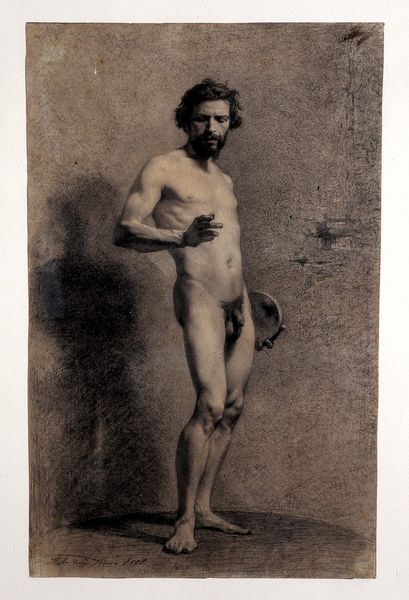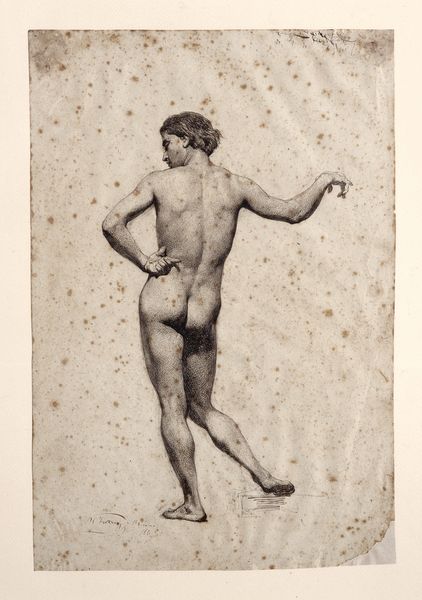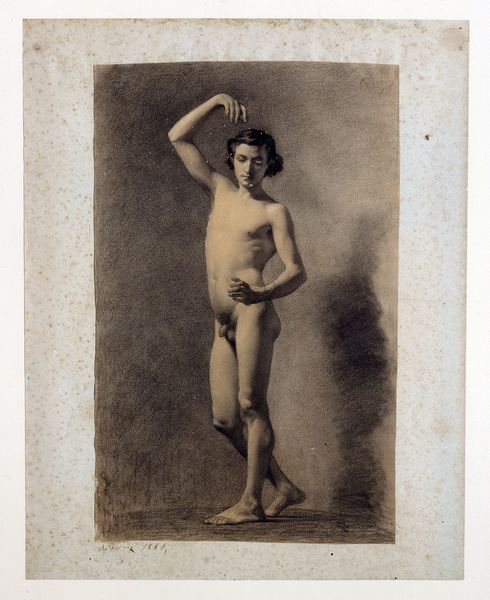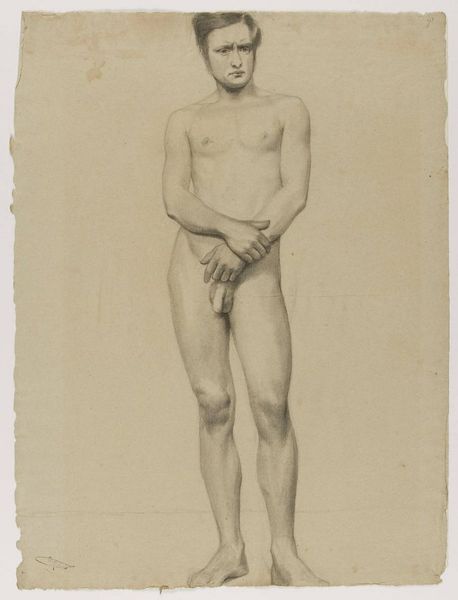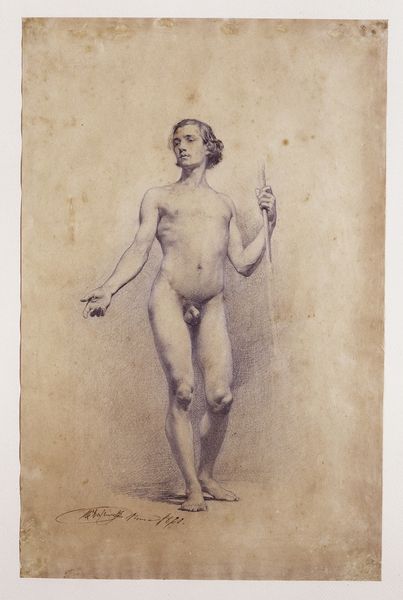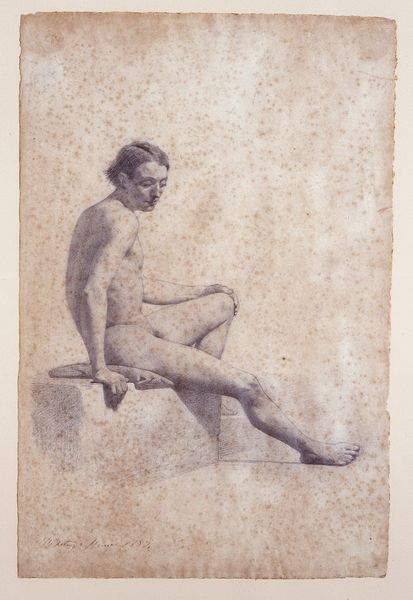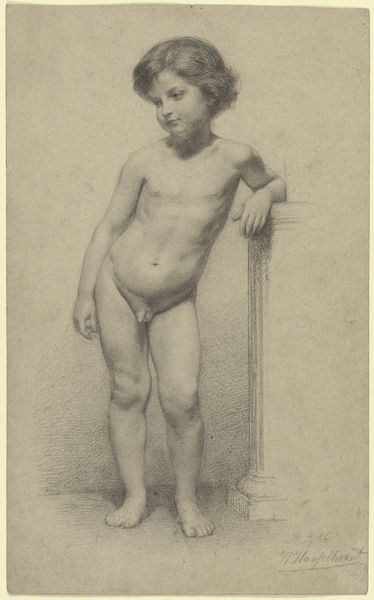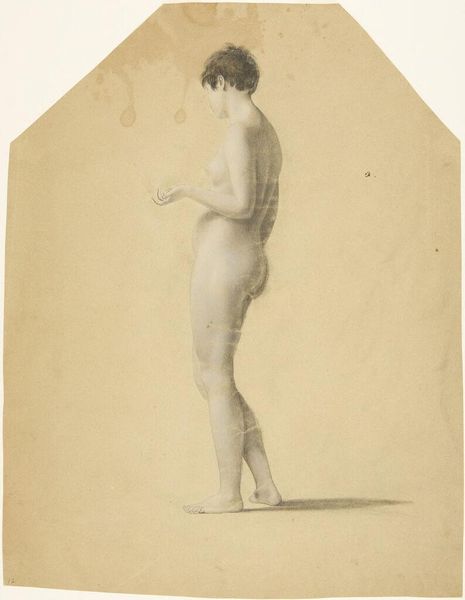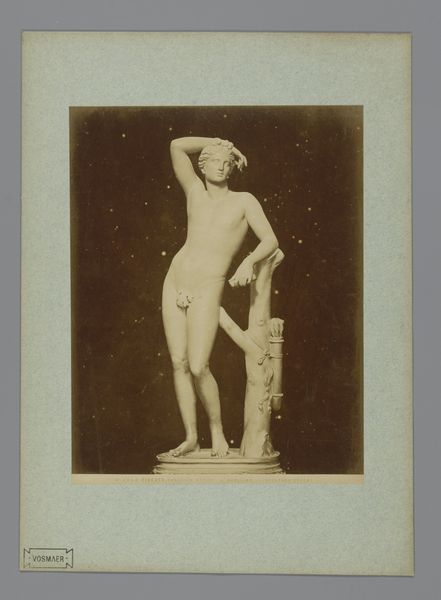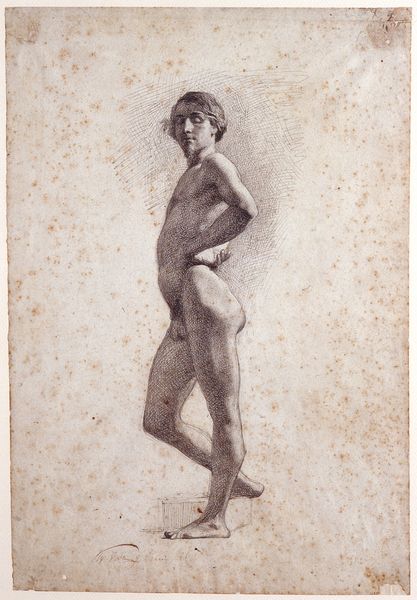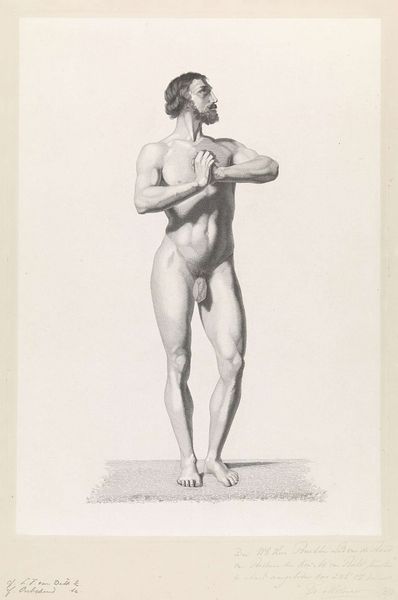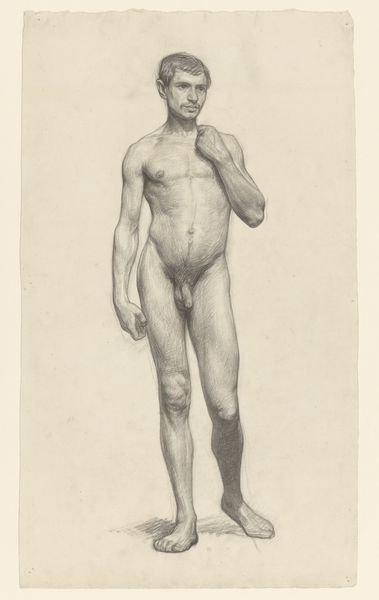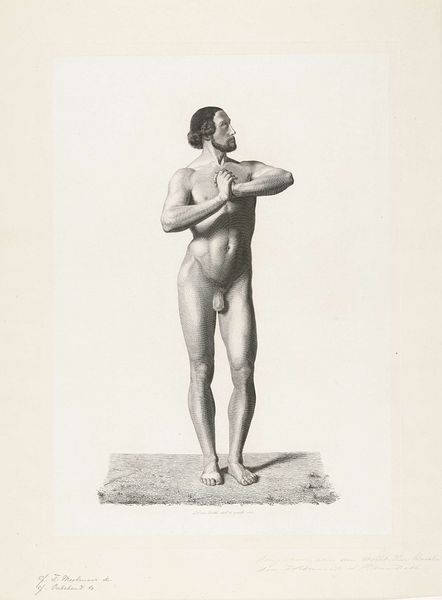
drawing, graphite, charcoal
#
portrait
#
drawing
#
pencil sketch
#
charcoal drawing
#
pencil drawing
#
graphite
#
portrait drawing
#
charcoal
#
tonal art
#
academic-art
#
charcoal
#
nude
#
male-nude
Copyright: Public domain
Curator: Looking at "Three quarter male nude" rendered in graphite and charcoal by Mariano Fortuny Marsal in 1861, what's your initial feeling? Editor: Brooding. There's a raw, vulnerable quality. His stance feels simultaneously defiant and self-conscious. It immediately brings up questions of male gaze, historical power dynamics, and the objectification of the male form. Curator: The rendering definitely places him in a symbolic realm—that little podium, for example. There is a self-aware theatricality that transcends mere representation. It’s as though he’s not simply being seen, but also performing a certain idea of masculinity, or even nobility. Editor: Precisely! That stage raises him but also confines him to a particular narrative of masculinity, specifically that sanctioned by the academies. He's both an individual and an allegory of ideals. Curator: I am drawn to the realism in the man's beard contrasted with the almost dreamlike hazy background. The beard acts as an almost iconographic identifier for male virility. Editor: Yet, there's something undeniably contemporary in his gaze and demeanor. It complicates any simplistic reading of the piece as simply a celebration of male strength or idealized form. The expression in the face speaks of anxiety, which, considering the societal constraints placed upon men during that period, resonates with an undercurrent of internal conflict. Curator: Yes! And this anxiety reminds me that the nude has had very specific political resonances tied to the male gender. As it oscillates through artistic conventions from classical depictions to modernist explorations, it embodies evolving ideas of identity, beauty, and, often, subversion. Editor: Agreed. By studying images like these, we can see the shifting definitions of the self and the continuous negotiation between historical perception and individual expression across genders and cultures. It allows a space for understanding intersectional realities. Curator: It encourages questioning our preconceived ideas of cultural representations and helps find spaces where there are unexpected continuities of human experience. Editor: And allows for continuous discovery as societal perceptions shift and evolve. Thank you.
Comments
No comments
Be the first to comment and join the conversation on the ultimate creative platform.
